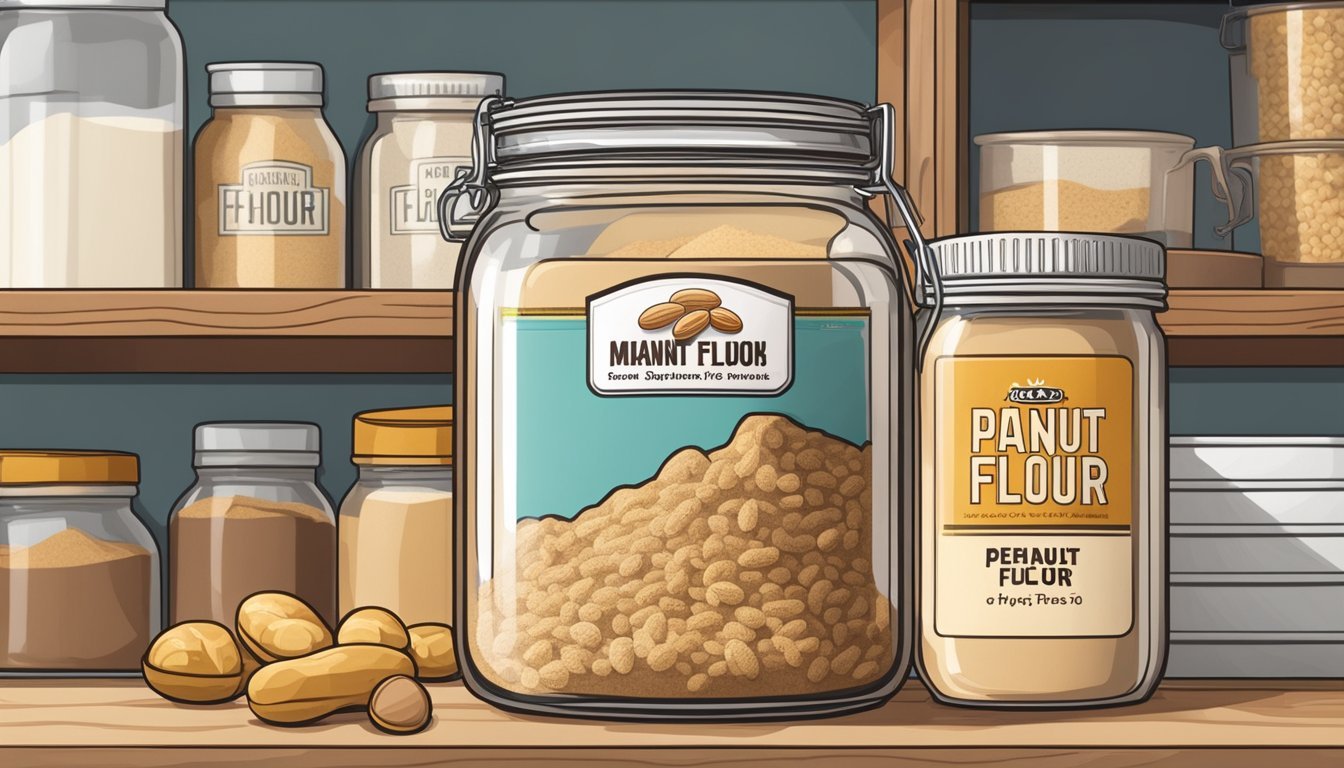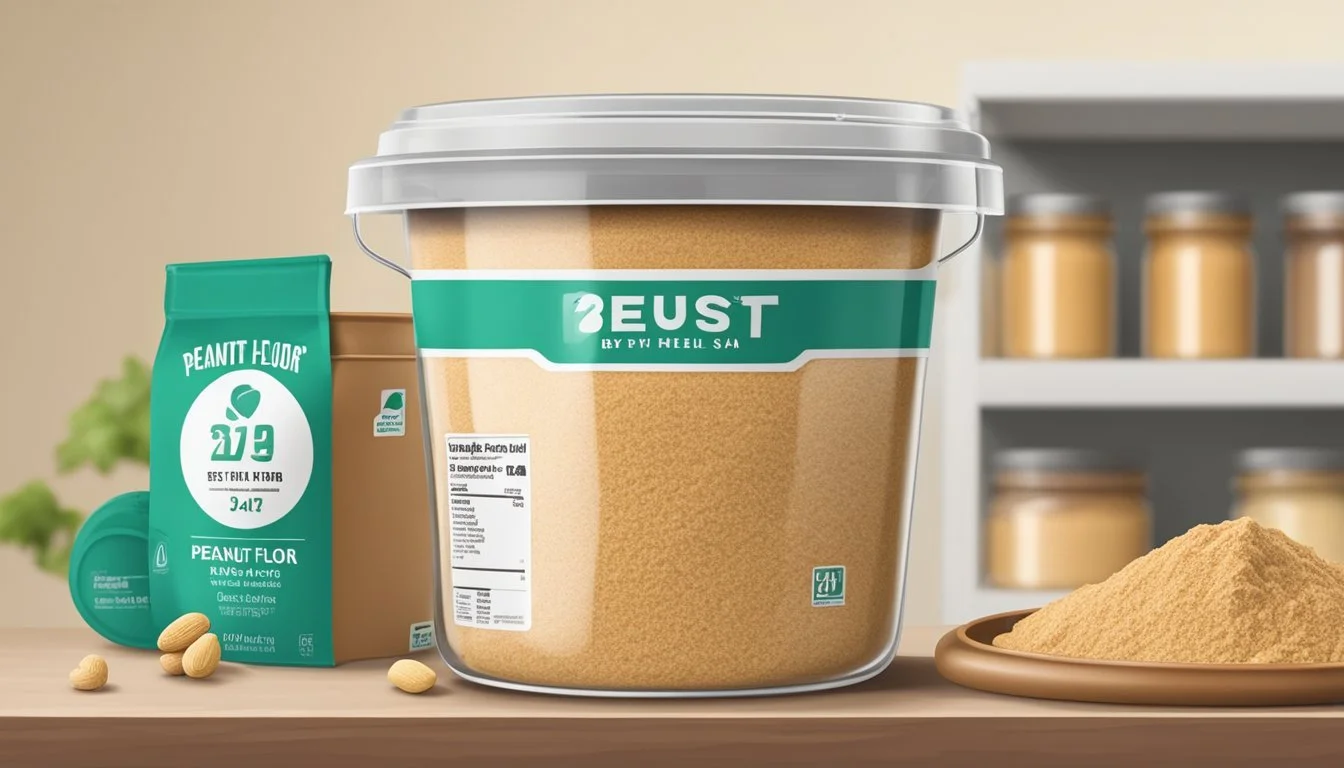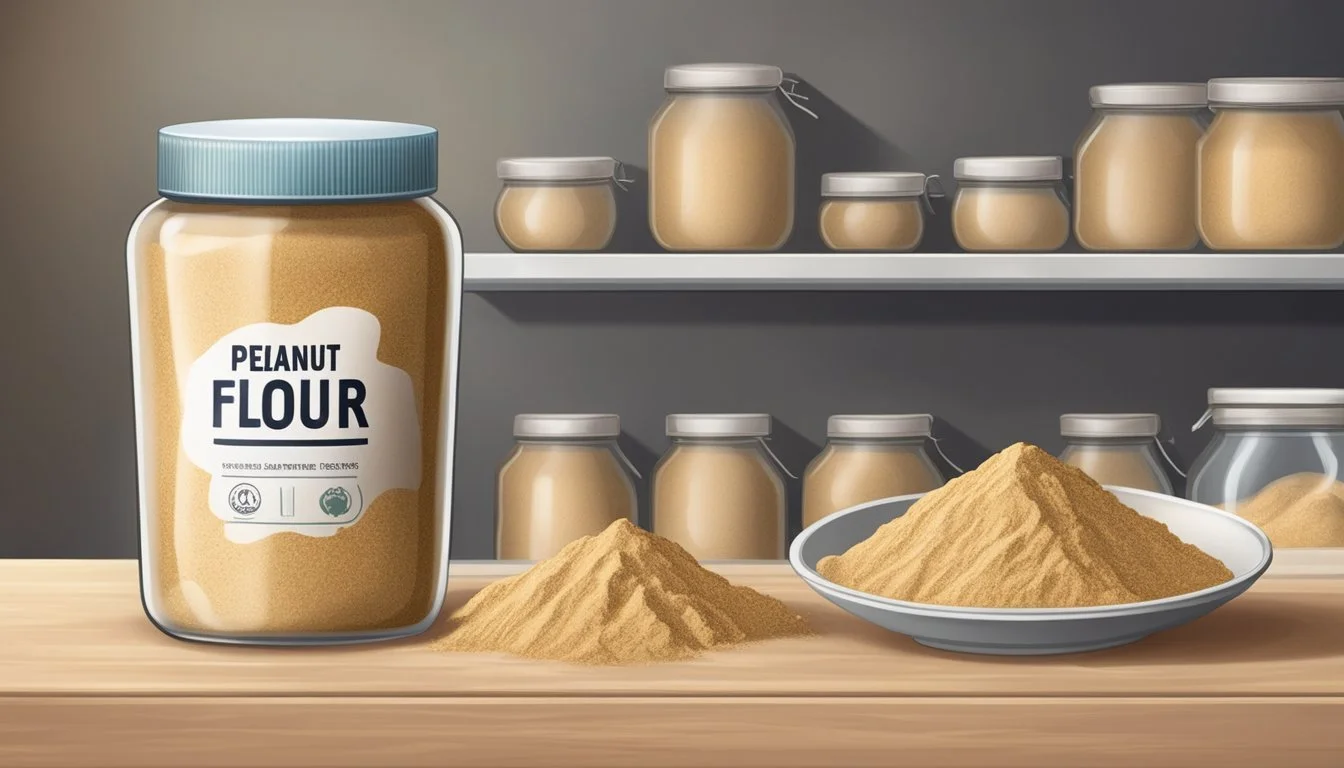How Long Does Peanut Flour Last?
Shelf Life and Storage Tips
Peanut flour is a versatile ingredient favored for its high protein content and gluten-free status, offering a healthier alternative to traditional wheat flours. Its popularity in various dietary lifestyles, from vegan to ketogenic, stems from its nutritional profile and the rich, nutty flavor it adds to recipes. The longevity of peanut flour is influenced by multiple factors such as storage conditions, whether the packaging is open or sealed, and humidity levels.
Typically, this specialty flour can remain shelf-stable for six months to one year when stored properly in a cool, dry place. Those aiming to extend the shelf life of peanut flour can store it in an airtight container, reducing exposure to air and moisture. For those living in warmer climates or during summer months, refrigeration or even freezing can vastly prolong its usability, potentially up to two years.
Ensuring the flour remains free from contamination is crucial. Peanut flour is prone to developing rancidity, particularly if stored inappropriately or kept beyond its shelf life. The signs of spoilage, such as an off-odor, changes in color, or the presence of mold, indicate the flour is no longer suitable for use and should be discarded. To maintain the integrity of the flour, store it away from direct light and sources of heat, which can accelerate spoilage.
The Basics of Peanut Flour
Peanut flour is a finely ground powder made from blanched peanuts. Traditional to the array of nut flours, it is recognized for its high protein content and reduced fat levels compared to whole peanuts. Peanut flour can vary in fat content, typically ranging from 12% to 28% fat, making it a suitable ingredient for those monitoring their fat intake.
Interesting in terms of nutritional profile, it is inherently gluten-free, which renders it an excellent alternative for those with gluten sensitivities or celiac disease. The flour's nutritional composition boasts a substantial amount of protein, contributing to both its popularity in dietary plans that emphasize protein intake and its utility in enhancing the protein content of recipes.
When considering its storage life, peanut flour is stable at room temperature for roughly six months if stored properly. For extended shelf life, refrigeration or freezing can preserve its quality for up to a year.
Here is a brief overview of its nutritional benefits:
High in protein: Vital for muscle repair and growth
Low in fat: Reduced-calorie option compared to other nut flours
Gluten-free: Safe for individuals with gluten intolerance
Dietary fiber: Aids in digestive health
Nutrition aside, its culinary versatility is noteworthy. Peanut flour can replace all-purpose flour in recipes; however, adjustments might be necessary for other ingredients, particularly fats, to prevent an overly greasy outcome. Thus, it stands as a versatile addition to both sweet and savory dishes, offering a nutty flavor and conducive texture.
Determining Shelf Life
The shelf life of peanut flour is influenced by various factors and can be different from the expiration date indicated on the package. Understanding these aspects can help consumers determine the actual usability of their peanut flour.
Factors Affecting Shelf Life
Shelf life is the period during which peanut flour maintains its desired quality and safety. A key determinant of shelf life is the storage conditions. Peanut flour should ideally be kept in a cool, dry place away from direct sunlight, as heat and moisture can hasten the degradation process. Once opened, peanut flour's exposure to air and humidity can shorten its shelf life, making proper sealing and storage imperative.
Packaging also plays a vital role. The original, unopened package typically protects the flour from environmental factors better than resealable or makeshift containers. Additionally, peanut flour's composition, including its fat content, means it is more prone to rancidity than other flours, hence why recommended storage may include refrigeration or freezing to extend freshness.
Expiration Date vs. Peak Quality
The expiration date or best-by date on a package of peanut flour is the manufacturer's estimate of when the product will no longer be at its peak quality — it's not a hard and fast rule for when the flour becomes inedible. Typically, this date assumes the flour has been stored under optimal conditions and remains unopened. On the other hand, peak quality refers to the time frame in which the peanut flour will taste and perform its best. This can vary, but it is generally a shorter period than the actual time it takes for the flour to become unsafe to eat.
Consumers can use these dates as guidelines but should also rely on their senses—sight, smell, and taste—to evaluate the flour's condition. If the peanut flour has an off smell, visible mold, or taste alterations, it should be discarded regardless of the date printed on the package.
Proper Storage Techniques
To maintain peanut flour's quality and extend its shelf life, proper storage is crucial. Differentiating between unopened and opened packages, as well as selecting the right environment for storage—be it pantry, fridge, or freezer—is essential for keeping the flour fresh.
Unopened vs. Opened
Unopened peanut flour sealed in its original packaging typically has a longer shelf life than once it's been opened. To maximize freshness, one should store unopened bags in a cool, dry place away from direct sunlight and moisture which could compromise the integrity of the flour.
Once opened, transferring peanut flour to an airtight container is the best practice. This keeps out moisture and other contaminants that could hasten spoilage. It also prevents the absorption of odors from other foods, which is critical for maintaining the flour's flavor profile.
Storing in Pantry
Pantry storage works well for short-term keeping of both opened and unopened peanut flour. The conditions should be:
Cool: Maintaining a consistent temperature below 68°F (20°C)
Dry: Low humidity is essential to prevent clumping and the growth of mold
Dark: A shaded area away from sunlight helps to preserve the oil content
These conditions slow down the degradation process and keep the flour usable for everyday cooking and baking needs.
Refrigerating and Freezing Options
Refrigeration and freezing are optimal for long-term preservation of peanut flour's freshness. The low temperatures greatly slow down the rate of oxidation and rancidity:
Refrigerator: Store opened peanut flour in an airtight container for 6-12 months. Ensure the container is moisture-resistant, such as glass or heavy-duty plastic.
Freezer: For the longest shelf life, freezing peanut flour in a sealed airtight container or plastic bag is ideal. It can last for 12-18 months. Be sure to eliminate as much air as possible before sealing to prevent freezer burn.
By effectively using these storage conditions, one not only extends the shelf life of peanut flour but also maintains its taste and nutritional value.
Identifying Spoilage
The reader should be aware that recognizing spoilage in peanut flour involves checking for changes in appearance, smell, and taste. These sensory checks are crucial for ensuring food safety and preventing health risks associated with consuming spoiled food.
Visual and Texture Changes
One should inspect peanut flour for any visual signs of spoilage, such as mold growth or discoloration. Spoiled peanut flour may also exhibit changes in texture, becoming clumpy or unusually coarse, potentially due to moisture. These are clear indications that the peanut flour has gone bad and is not safe for consumption.
Odor Detection
Peanut flour should have a slight nutty smell or no odor at all. If one detects a rancid, sour, or musty odor, it's a reliable sign that the flour has turned bad. Odors are often the first noticeable sign of spoilage, so one should trust their nose when evaluating whether peanut flour is safe to use.
Taste Test
Though it's not generally recommended to taste questionable food, a tiny amount can be tasted as a last resort to check if the flour is rancid. If the peanut flour tastes bitter or off, it should not be consumed. It is important to note that performing a taste test should be done with caution to avoid any potential health risks.
Health and Safety Considerations
When considering the shelf life of peanut flour, one must prioritize health and safety to prevent foodborne illnesses. Peanut flour, similar to other nut flours, can become rancid or contaminated if not stored correctly.
Storage: To extend its shelf life and maintain safety, peanut flour should be stored in a cool, dry place such as the refrigerator or freezer. It typically lasts:
6-12 months in the refrigerator
12-18 months in the freezer
Expiration: While some flours may remain safe to consume after their expiration date, using peanut flour past this date can increase the risk of spoilage. Pay attention to:
Changes in color or smell
Signs of moisture or mold
Contamination: To prevent contamination, one should:
Keep peanut flour separated from raw foods such as eggs
Ensure clean utensils and containers are used
Symptoms of Spoilage: Consuming spoiled peanut flour could lead to food poisoning. Be aware of symptoms such as:
Nausea
Vomiting
Diarrhea
Individuals handling peanut flour must also be aware of allergies, as peanut is a common allergen. Cross-contamination with other foods should be strictly avoided to ensure safety for those with peanut allergies. Always label containers holding peanut flour to prevent accidental exposure.
Handling: When using peanut flour in cooking or baking, one must:
Refrigerate doughs and batters as recommended
Cook products to the appropriate temperatures to ensure safety
Adhering to these health and safety considerations ensures that consumption of peanut flour remains a safe practice.
Maximizing Peanut Flour Usability
To make the most out of peanut flour in the kitchen, certain strategies can enhance its role in recipes, serve as a substitute for other flours, and extend its shelf life.
Incorporating into Recipes
One can use peanut flour to add a rich, nutty flavor to baked goods, and it pairs well with chocolate and honey. It's ideal for protein-rich baking, such as in chocolate peanut butter oatmeal cookies. Considering peanut flour's dense protein content, adding an extra leavening agent may be necessary to help baked goods rise.
Substituting Other Flours
Peanut flour can replace up to 30% of wheat flour in most recipes to boost protein and reduce carbohydrate content. When substituting in cooking, it can thicken soups and stews. For gluten-free baking, one could mix peanut flour with other gluten-free flours like oatmeal or whole grain flours for better texture and flavor.
Extending Shelf Life with Additives
By adding natural preservatives such as sugar or salt, peanut flour's usability can be extended. In small quantities, these additives can maintain freshness and flavor, especially if one is mixing peanut flour with self-rising flour or white flour, which may already contain baking powder and salt.
Understanding Nutritional Aspects
Peanut flour is recognized for its nutritional value, providing a substantial amount of protein. Typically, each quarter-cup serving contains between 14 to 16 grams of protein. This makes it a significant plant-based protein source, ideal for various dietary needs. Additionally, peanut flour holds approximately 4 grams of fat, a reduction from the fat content found in whole peanuts, owing to the fat extraction process during production.
One of the notable benefits of peanut flour is that it is gluten-free, making it a suitable alternative for those with celiac disease or gluten sensitivities. Unlike traditional flours, peanut flour doesn't contain any wheat or gluten-containing grains, thus offering a safe option for gluten-free cooking and baking.
Furthermore, peanut flour is low in sugar, and its only ingredient is typically roasted peanuts. This simplicity in composition underscores its dietary versatility. It is also considered to be vegan and naturally devoid of dairy, eggs, or any animal-derived additives.
Nutrient Amount in 1/4 cup of Peanut Flour Calories 110-130 Protein 14-16g Fat Approx. 4g Carbohydrates 9g Dietary Fiber 4g Sugar Low
The flour's nutrient-dense profile not only caters to those looking for a high-protein, low-fat option but also to those seeking heart-healthy nutrients. Peanut flour is an excellent source of niacin, an important vitamin for heart health, and contains arginine, an amino acid that aids in improving blood flow by dilating blood vessels.
Dealing with Common Contaminants
In preserving the quality and safety of peanut flour, it is crucial to prevent infestation and avoid cross-contamination. These measures safeguard against common pests such as weevils and ensure the product remains free of unwanted allergens or pathogens.
Preventing Infestation
To protect peanut flour from pests, specifically weevils, proper storage is essential. Here is how one can prevent infestation:
Temperature Control: Store peanut flour in a cool, dry place to create an environment that is inhospitable to weevils.
Sealed Containers: Use airtight containers that are impenetrable to pests to keep peanut flour sealed off from potential infestations.
Avoiding Cross-Contamination
Cross-contamination can affect peanut flour's purity, potentially introducing allergens or reducing product quality. To prevent this:
Separate Storage: Keep peanut flour away from raw foods, such as eggs or other raw flours, which may spread contaminants.
Utensil Hygiene: Always use clean utensils when handling peanut flour and ensure it does not come into contact with sources of potential contamination.
Exploring Market Varieties and Brands
When consumers peruse the market for peanut flour, they will encounter a diverse spectrum of brands and quality tiers. A well-known platform, such as Amazon, features a vast array of brands, presenting buyers with numerous options according to their culinary needs or preference for nutritional content. Here's a closer look at the landscape of peanut flour varieties and brands that have established their presence:
Protein Plus, highly regarded for its protein-rich peanut flour, appeals to fitness enthusiasts.
Judee's Gluten-Free offers peanut flour that caters to those with dietary restrictions.
The Peanut Butter & Co. brand provides a balance between quality and flavor, popular for household culinary uses.
The brands vary not just in name but also in the subtleties of taste and texture, which can influence baking outcomes and satisfaction in peanut-flavored products. Consumers look to the below factors when making a choice:
Factor Description Protein Content Some brands offer higher protein levels, suitable for dietary supplementation. Purity Brands like Protein Plus boast a high degree of purity in their flour. Price Point The cost can range significantly, influenced by brand reputation and quality. Culinary Versatility Various brands offer flours that suit baking, thickening, or as mix-ins for shakes. Allergen Information Information regarding gluten-content or cross-contamination is vital for sensitive users.
Quality is typically indicated by factors such as the absence of additives and a more natural, less processed product. Reviews and ratings on Amazon can serve as a reliable guide to a brand's reputation for quality among consumers.











